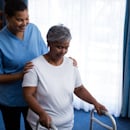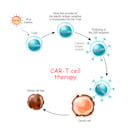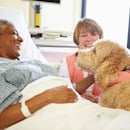
The RAPID Model-Disposition
To review the first four articles please click on the links below
Article 1: Overview of Critical Incident Stress Management (CISM) .
This article is the first in a six-part series that delves deeper into CISM, the RAPID model, and Psychological First Aid.
Article 2: The RAPID Model- Rapport
Establishing The following rapport is an essential first part of any relationship; you are trying to build a trusting and helpful relationship with a person who may be experiencing the worst day of their life.
Article 3: The RAPID Model-Assessment
This assessment is derived from a guided conversation that is based on the survivor’s own narrative. It is punctuated with specific questions regarding the details of the event and the survivor’s reactions to the event. This is not a clinical assessment, instead, it is an assessment based on common sense allowing the survivor to tell you what happened and their reactions because of what has happened.
Article 4: The Rapid Model-Prioritization
After listening and assessing the situation, before implementing an assessment, it is important that we prioritize or triage the situation to help the survivors who need the greatest assistance. Prioritization, in this instance, is defined as putting an emphasis on assisting basic functional capacity (Everly, McCabe, Semon, Thompson, & Jonathan, 2014).
Article 5: The Rapid Model-Intervention
The goal of intervention is to attend to basic needs, mitigate acute psychological distress and if possible, restore acute functional capacity. Attending to basic medical and physical needs is your first step. Once these needs have been met, you can move forward with mitigating psychological distress.
Psychological First Aid (PFA) is a compassionate and supportive presence designed to mitigate acute distress and assess the need for continued mental health care. PFA is not therapy, diagnosis, or treatment. John Hopkin’s program has developed an acronym, RAPID, to help guide you through PFA as well as self-care. RAPID:
Rapport/Reflective/Active Listening
Assessment
Prioritization
Intervention
Disposition
(Everly, McCabe, Semon, Thompson, & Jonathan, 2014)
As members of the healthcare profession, we know that the process of helping others, especially in times of pandemics, and disasters (natural or manmade) take a toll on each of us. Using a standardized process to help others in psychological stress will help the person in need and using a self-care model will help ensure we have the stamina, and psychological and physical stability to help those in need.
This seven-part series will discuss each segment of the acronym RAPID as well as self-care.
Part 6: Disposition
Earlier in the series, you learned about tactics that you might employ to intervene during a disaster situation. We talked about encouraging people to vent, delaying what may be self-defeating impulsive actions, and using distraction tasks. We also talked about the value of education, both explanatory and anticipatory, normalization, reassurance, stress management techniques, and re-framing, planting a seed to help people focus not on what they have lost, but what they have and how they can take that and move forward, and the importance of social support. Now, we focus on how to help the survivors long-term.
Disposition is not only in the moment but also a plan for follow-up. Follow-up is extremely important in PFA because what you have learned to this point is just a snapshot and not a total representation of their status (Everly, McCabe, Semon, Thompson, & Jonathan, 2014).
As part of the process, you will be doing follow-up visits. One follow-up visit is mandatory if possible. During the first follow-up visit, you are trying to establish what has happened in the last several days and how the survivor is reacting. If the person seems capable of taking care of themselves and can handle their activities of daily living, your intervention has ended. However, a second or third follow-up visit may be necessary (Everly, McCabe, Semon, Thompson, & Jonathan, 2014).
If you determine that the survivor cannot function independently or requires significant support from others it may be time to consider a referral. This includes making sure the survivor gets to the next resource. This is not a time to give them a phone number and leave.
The Next Step in Resources Could be:
- Friends and family
- Employee Assistant Programs
- Crisis hotlines
- Police
- Paramedics
- Disaster relief services
- Faith-based resources
- Financial resources
There are survivors who may be distrustful or refuse additional resources. This may be because of pride, culture, suspicions, or other personal reasons. In this event our job is to be an advocate, offer encouragement, or be logistical liaisons.
In summary, it is our job under PFA to do crisis intervention, not diagnosis and treatment. Disposition is just one part of the process to help survivors in their most difficult times. Follow-up meetings with the survivor are a key element of Disposition.
The next article in the series is Self-Care. Each step of the acronym RAPID is essential so be sure to read each of the seven articles.
References
Everly, G.S., McCabe, L.O., Semon, N.L., Thompson, C.B, Jonathan, L. (2014). The Development of a Model of Psychological First Aid for Non–Mental Health Trained Public Health Personnel; The Johns Hopkins RAPID-PFA.




